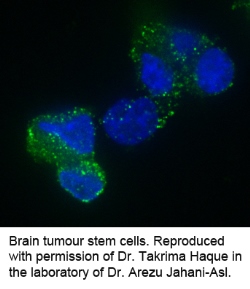Fall From Grace
"He acted like a kid. He didn't act like a man."
"Nobody from the board or [connected to] the school gave him any money [for tuition of $12,700]. The board got paid its tuition."
"The first question he asked was can he drink the water?"
"He'd get up in the morning, I'd make him breakfast, pack him a lunch and he'd come to school with me. After school he practised and we'd come home. Sometimes we'd go back in the evening to do more work [on his basketball skills]."
"He struggled in school. He had gaps in his education. He'd been in and out of school there [South Sudan], so that was normal."
"But every one of his teachers came to see me. They'd say what a nice boy he was. He's trying so hard."
Peter Cusumano, basketball coach, Windsor, Ontario
"He was a good guy, he had a big heart. We're good friends."
"Every time we went out to eat, if a teammate didn't have enough money he'd spot him. He'd sometimes pay for people. He was just a really good guy."
Ramkel Wal, 17, Catholic Central Comets team player, Windsor, Ontario
 |
That's a program that aids in finding homes for international students, among willing host families. South Sudanese Jonathan Nicola found a home living with Comets basketball coach Peter Cusumano, last November. Two government agencies had looked into Nicola's background before he was permitted to enter Canada. He was in possession of a passport, birth certificate, student visa and immunization records. Everything he needed to present himself as a 17-year-old qualifying for entry to Canada as a high school student.
Mr. Cusumano spoke of his experiences with the young man, how life in Canada so pleased Jonathan Nicola, initially malnourished; amazingly tall but skin and bones. "He put on 25 pounds staying with us in five months", Cusumano remarked. The young man had little difficulty establishing a routine of attending school, practising basketball and diligently applying himself to homework. Shy initially, the young man soon became integrated comfortably with Cusumano's family.
He was teenager-uncharacteristically amenable about helping with daily domestic chores. And in time he began to divulge stories of his homeland, speaking of dreadful violence, poverty, and his heartfelt gratitude to have escaped all of that miserable dysfunction. His father was in Saudi Arabia, his mother in South Sudan. He had six or seven full siblings, and numerous half-siblings, he explained. The coach would provide Nicola with spending money, and life was good, life was 'normal'.
Cusumano describes how much Nicola enjoyed being on the basketball court. Slowly learning the game, working his way into the lineup. People stood up, took notice in the high school basketball community. "I went up against him a couple times. He was very aggressive. He had such size and strength", recounts, a player from another team, Mitch Zimmerman, of the teen who had never played organized basketball before arriving in Canada.

Catholic Central Comets Jonathan Nicola, centre, defends against Kennedy Clippers Omer Sulliman, left, in senior boys’ basketball action at Catholic Central on Jan. 5, 2016.
A national scout watched him at a tournament in London and was impressed with his "raw, uncoordinated" talent. He was subsequently ranked as one of the Top 15 prospects in the country. And where is he now? In a detention centre, a third hearing in the offing before the Immigration and Refugee Board, to take place in May. In mid-April the Canada Border Services Agency appeared at Catholic Central to take him into custody.
Jonathan Nicola admitted readily that he had falsified his age. His fingerprints were matched with those of a person who had unsuccessfully applied for a U.S. visitor visa in 2015. On the application was a birth date of November 1, 1985, making Nicola 29 years of age. "What he did wasn't right. To portray him as a criminal is not fair either", remarked Mr. Cusumano of the young man who had lived with his family for six months.
Who truly can find fault with the deception that Jonathan Nicola resorted to? Unfair is the very least of what his incarceration and pending deportation represents.
 |
| Catholic Central Comets Jonathan Nicola, centre, during warm-ups with teammates Caleb Akinsanya, left, and Ramkel Wah on Jan. 5, 2016. |
Labels: Canada, Conflict, Human Relations, Poverty, South Sudan




























